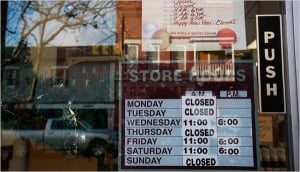A Toast to the Sears Catalog

 In retail, as in every industry, eras come and go. Few recent events mark the passing of an era like the announced bankruptcy of Sears. That the company that ruled brick-and-mortar and mail order would be felled by online retail and nimbler competitors isn’t surprising. What is unusual is for Sears’ reign to have lasted as long as it did.
In retail, as in every industry, eras come and go. Few recent events mark the passing of an era like the announced bankruptcy of Sears. That the company that ruled brick-and-mortar and mail order would be felled by online retail and nimbler competitors isn’t surprising. What is unusual is for Sears’ reign to have lasted as long as it did.
As Bloomberg columnist Joe Nocera wrote this week of his visit to the last remaining Sears store in New York: “There is one other thing I noticed in the store: signs celebrating 2018 as Sears’s 125th birthday. For all its woes, that’s no small accomplishment.”
One major reason for that longevity is the scale of innovation Sears introduced in retailing, especially via its catalog business. The company made more goods available to more people in more places, at more income levels, than anybody before it. In doing so, it expanded purchasing options to millions of people beyond their immediate surroundings.
The Sears catalog made items otherwise only available in city stores accessible to rural residents, including African-Americans who faced limited options under Jim Crow. As The Washington Post’s Antonia Noori Farzan notes, “the company revolutionized rural black Southerners’ shopping patterns in the late 19th century, subverting racial hierarchies by allowing them to make purchases by mail or over the phone and avoid the blatant racism that they faced at small country stores.”
Of course, it would take long years of hard work and political and legal activism to finally put an end to segregation. Yet such workarounds, implemented in the face of oppressive structures, can help play a role in forcing reform—much as carpooling aided the Montgomery bus boycott. It’s much less difficult to confront your oppressor when he can’t block your access to basic needs like shopping and transportation.
Beyond basic needs, though, the Sears catalog also gave more people access to items for higher pursuits—like making music. In the rural South, it played a role in the birth of Delta blues by making affordable guitars widely available. “By 1908 Sears was offering a guitar, outfitted for steel strings, for $1.89 ($45 today), making it the cheapest harmony-generating instrument available,” wrote musician and writer Chris Kjorness in Reason. “Throughout the 1910s Delta blacks routinely ordered a wide assortment of goods from Sears, Roebuck, including the instrument that would define them.”
The blues, of course, have left an indelible mark on American culture. But even the best-run firm cannot live forever. But, as The Atlantic’s Derek Thompson well put it, “You don’t live longer than any human in history without getting a few things right.”
For more background on the ever-changing world of retail, see the Competitive Enterprise Institute study “Wal-Mart and the Politics of American Retail” by Zachary Courser.